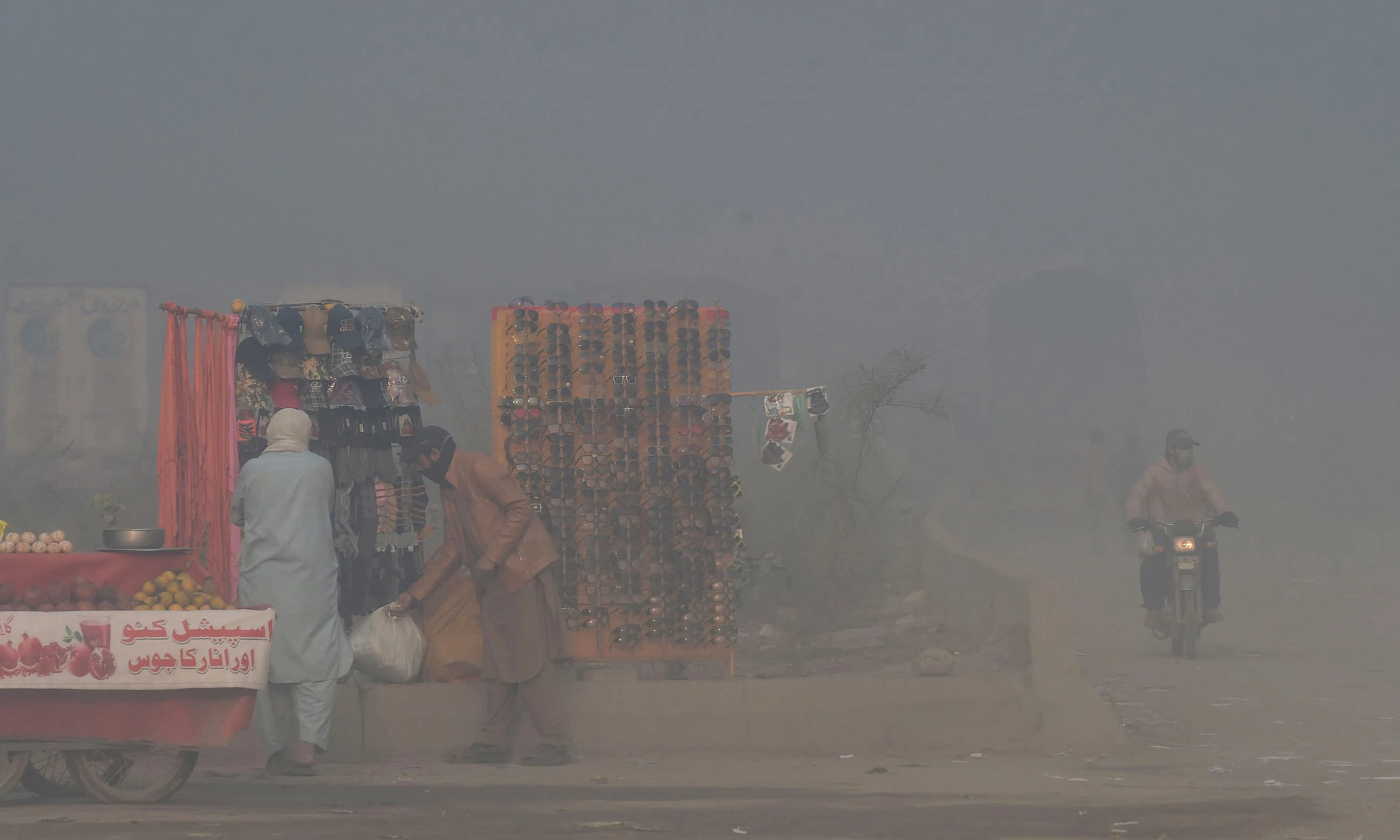Smog a deepening environmental emergency

Stay tuned with 24 News HD Android App

Punjab Province, home to over 127 million people, represents a staggering 52.87% of Pakistan's national population and contributes 54.2% to the national GDP. However, this economic powerhouse is grappling with a severe air pollution crisis, particularly from October to January, when smog blankets its urbanized and industrialized cities. This phenomenon has become known as Punjab’s “fifth season,” bringing significant health and environmental challenges.
Climate-induced weather patterns have played a critical role in worsening air quality. Low wind speeds, high humidity, and temperature inversions create conditions that trap pollutants close to the ground. As minimum temperatures rise, the diurnal temperature range narrows, indicating increased aerosol concentrations. Satellite imagery highlights that urban centers, including Lahore, Faisalabad, and Gujranwala, are particularly vulnerable to high levels of pollution.
The rise in the number of smog days—recorded as high as 25 in some areas during peak months—has been alarming. Continuous degradation of air quality and the increasing prevalence of respiratory illnesses signal a grave public health threat. Recent reports indicate that hospital admissions for respiratory issues have surged, putting additional strain on healthcare systems. The situation has sparked growing concern among residents, who now recognize the haze as a major environmental crisis.
In 2020, the sectoral emission inventory of anthropogenic air pollutants in Punjab Province estimated a cumulative emission load of 7,017 kilotons per year (kT/Y). Biomass and coal combustion are identified as the leading sources of particulate matter, while liquid fuels contribute significantly to carbon monoxide (CO), sulfur dioxide (SO2), and nitrogen oxides (NOx) emissions. Alarmingly, a cumulative emission inventory from 1990 to 2020 reveals a significant upward trend in emissions, with levels surging to 3.5 times those recorded in 1990.
This increase is attributed to several factors, including urbanization, industrial expansion, and reliance on outdated technologies for energy and transportation. Notably, the construction industry and brick kilns are major contributors to the toxic particulate matter that exacerbates smog conditions.
Lahore, once celebrated as the “City of Gardens,” is now the epicenter of the smog crisis. The Air Quality Index (AQI) in the city has reached alarming levels, frequently exceeding hazardous limits of 300–400 AQI—far above the safe thresholds established by both the Punjab Environmental Quality Standards and the World Health Organization (WHO).
According to the 2023 census, Lahore's population has soared to over 13 million, growing at an annual rate of 3.41%. This rapid urbanization has strained infrastructure and escalated vehicular and industrial emissions. The increase in vehicle ownership, combined with inadequate public transportation options, has led to a dramatic rise in traffic congestion and emissions.
Smog typically peaks in Lahore from October to February, with November and December being the most affected months. During this period, cooler temperatures and temperature inversions trap pollutants near the ground. This effect is exacerbated by increased vehicular emissions, industrial activity, and stubble burning in surrounding agricultural regions. The lack of wind further hampers the dispersion of these pollutants, worsening air quality.
Globally, air quality issues are a pressing concern. The World Health Organization (WHO) has established a safe AQI level of 0-50. However, many cities worldwide face severe air quality challenges, with some exceeding 300 AQI, similar to Lahore's situation. For instance, cities like Delhi, Beijing, and Dhaka often grapple with hazardous pollution levels, prompting health warnings and government interventions. In fact, according to a 2022 report by IQAir, many of the world's most polluted cities consistently record AQI levels above 150, indicating unhealthy air quality.
The health impacts of persistent smog cannot be overstated. Studies have linked air pollution to increased rates of asthma, chronic obstructive pulmonary disease (COPD), and cardiovascular diseases. Vulnerable populations, including children, the elderly, and those with pre-existing health conditions, are particularly at risk. Mental health issues, such as anxiety and depression, have also been associated with prolonged exposure to poor air quality.
In response to this crisis, health professionals are advocating for urgent interventions, including public awareness campaigns on the dangers of air pollution, the promotion of cleaner energy sources, and enhanced healthcare facilities to manage respiratory illnesses.
Recognizing the severity of the situation, local and provincial governments have begun to implement measures aimed at improving air quality. Initiatives include the promotion of electric vehicles, stricter regulations on industrial emissions, and efforts to improve public transportation infrastructure. However, these measures require substantial investment and a commitment to long-term change.
Additionally, collaboration with international organizations and environmental NGOs is crucial. Programs aimed at educating farmers about alternative methods to stubble burning can help mitigate one of the key contributors to the seasonal smog crisis.
The escalating smog crisis in Punjab, particularly in Lahore, necessitates urgent action. As residents continue to suffer from poor air quality and its associated health risks, it is imperative for authorities to prioritize effective monitoring and implementation of strategies to combat pollution. The time for action is now, as the health of millions hangs in the balance, and the fight against air pollution must become a central focus for both local and national governments.
As the world grapples with environmental challenges, Punjab's smog crisis serves as a stark reminder of the urgent need for comprehensive policies that address not only air quality but also public health and sustainable development. A coordinated approach, involving community engagement, technological innovation, and international collaboration, will be essential in overcoming this pressing crisis.
